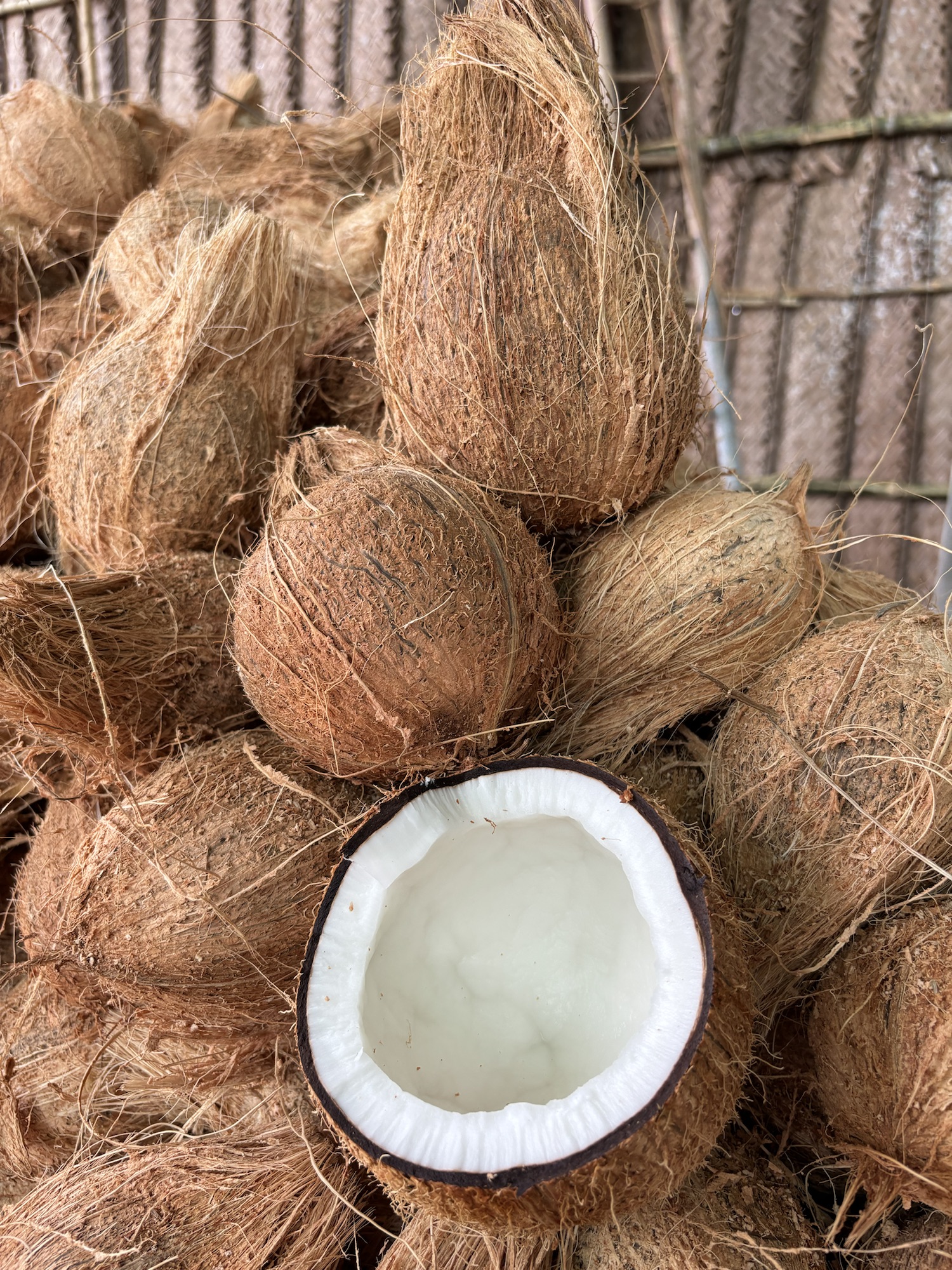
Countries that consume significant amounts of coconut but do not produce it locally often rely on imports from coconut-producing countries. While these countries may have a tropical climate that supports coconut production, they may lack large-scale cultivation due to environmental, economic, or other factors. Here are some countries that have high coconut consumption but little to no domestic production:
1. United States
- Consumption: The U.S. is a major consumer of coconut products, especially coconut water, coconut oil, and coconut-based snacks. The growing health-conscious population has driven the popularity of these products.
- Culinary Uses: Coconut is used in a variety of products, from baked goods to curries and smoothies. It is popular in vegan and health food communities, as well as in mainstream cooking and desserts.
- Production: The U.S. has no significant domestic coconut production due to its climate. Most coconut products are imported from countries like the Philippines, Indonesia, India, and Thailand.
2. Germany
- Consumption: Germany is one of Europe’s largest consumers of coconut products, especially coconut oil and desiccated coconut. Health trends have increased the demand for coconut oil for cooking and cosmetic use.
- Culinary Uses: Coconut oil and milk are often used in cooking and baking. Coconut water has become popular as a healthy beverage, and coconut-based snacks are widely available.
- Production: Germany imports almost all of its coconut products, primarily from tropical countries in Asia. It lacks the climate necessary for coconut cultivation.
3. United Kingdom
- Consumption: The U.K. is a significant consumer of coconut products, including coconut water, coconut milk, and coconut oil. These products are used in traditional British cooking and international dishes, particularly from Indian, Thai, and Caribbean cuisines.
- Culinary Uses: Coconut is a staple in curries, desserts, and beverages. Coconut oil is popular for frying and baking, especially among those following vegan and vegetarian diets.
- Production: The U.K. does not produce coconuts due to its climate. Most coconut products are imported from Southeast Asia and the Caribbean.
4. Canada
- Consumption: Canada has a growing demand for coconut products, especially coconut water, coconut milk, and coconut oil, driven by the health and wellness movement.
- Culinary Uses: Coconut is used in a variety of dishes, from smoothies to curries. It is also popular in desserts and health food recipes.
- Production: Canada’s cold climate prevents coconut cultivation. The country relies heavily on imports, particularly from tropical regions like Southeast Asia and the Caribbean.
5. Japan
- Consumption: Japan is a major consumer of coconut products, particularly coconut water and coconut oil. Coconut-based beauty products are also popular in the Japanese market.
- Culinary Uses: While coconut is not traditionally used in Japanese cuisine, it has become a popular ingredient in international dishes and desserts, as well as in health-conscious food products.
- Production: Japan does not produce coconuts due to its temperate climate. It imports coconuts and coconut products primarily from Southeast Asian countries.
6. South Korea
- Consumption: South Korea has seen a rise in coconut product consumption, especially coconut water and coconut oil, due to the influence of global health trends.
- Culinary Uses: Coconut is used in Korean adaptations of international dishes, smoothies, and desserts. Coconut water is also marketed as a healthy beverage.
- Production: South Korea does not produce coconuts and imports them from tropical countries.
7. Russia
- Consumption: Russia consumes a significant amount of coconut, particularly in the form of coconut oil, desiccated coconut, and coconut-based sweets.
- Culinary Uses: Coconut is used in baking, cooking, and snacks. Coconut water and coconut milk are increasingly popular in health food circles.
- Production: Russia does not have the climate for coconut cultivation, so it relies on imports from countries like Indonesia and the Philippines.
8. France
- Consumption: France is another major European consumer of coconut products. Coconut oil, coconut milk, and coconut water have become popular in the health-conscious market.
- Culinary Uses: Coconut is used in both traditional and international cuisines, including Thai, Indian, and Caribbean dishes. Coconut oil is also a favorite in baking and frying.
- Production: France does not produce coconuts due to its climate and imports them from tropical countries.
9. Saudi Arabia
- Consumption: Saudi Arabia consumes a large amount of coconut, especially in the form of coconut water and coconut milk, which are popular in beverages and cooking.
- Culinary Uses: Coconut milk is used in a variety of traditional and international dishes, while coconut water is consumed as a refreshing drink.
- Production: Saudi Arabia has no coconut production due to its desert climate, and it imports coconut products from tropical countries.
10. United Arab Emirates (UAE)
- Consumption: The UAE has a high demand for coconut products, particularly coconut water and coconut milk, driven by the health-conscious population and the country’s diverse expatriate communities.
- Culinary Uses: Coconut is used in many dishes, particularly in Indian, Thai, and Filipino cuisine, which are popular among the UAE’s diverse population.
- Production: The UAE does not produce coconuts and relies on imports from tropical countries like the Philippines and Thailand.
In these countries, the high demand for coconut products is met through imports, as the climates do not support coconut farming. The popularity of coconut-based products continues to grow, especially in the health and wellness sectors.



